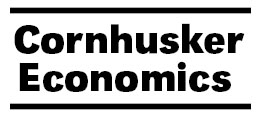Agricultural Economics, Department of

Cornhusker Economics
Date of this Version
1-18-2017
Document Type
Newsletter Issue
Citation
Cornhusker Economics January 18, 2017.
Abstract
Fire blight is a bacterial disease that can affect various parts of the apple tree during different growth stages, including the blossom, fruit, roots and shoots. Fire blight outbreaks cause serious damage to apple producers. In 2000, Michigan lost more than 600 acres of orchards and more than 220,000 trees aged two to five years to the disease, leading to a loss of more than $42 million to the region (Norelli, Jones, and Aldwinckle, 2003). Typically in the United States, fire blight losses exceed $100 million annually. In this study, we evaluate new production technologies aimed at controlling fire blight in the U.S. apple industry using a temporal and spatial partial equilibrium model.
Many recently popular apple varieties are more susceptible to fire blight than the dominant traditional varieties, particularly ‘Red Delicious’ and ‘Golden Delicious’ (Briggs and Yoder, 2012). These highly susceptible varieties include favorites such as ‘Fuji’, ‘Gala’, ‘Granny Smith’, and ‘Cripps Pink’. Growers of these susceptible varieties have suffered significant production losses from fire blight, which can be as large as 5% annually (Gianessi, Silvers, and Carpenter, 2002). As consumers substitute the susceptible varieties for traditional varieties (‘Red Delicious’ production in 2008 was only 65% of its 2000 level, while ‘Cripps Pink’ production nearly tripled in that same period), there is increased concern about the sustainability of production in regions where fire blight is prevalent.


Comments
Copyright 2017 University of Nebraska.